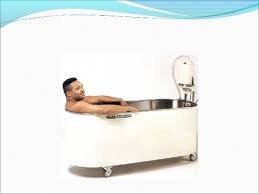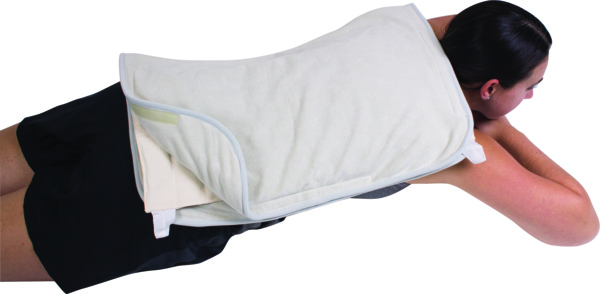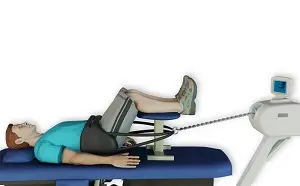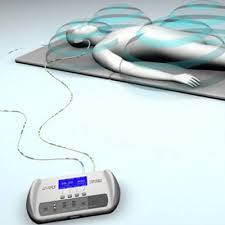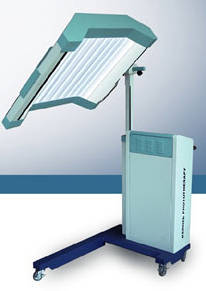Whirlpool bath therapy
Table of Contents
Introduction
The whirlpool bath is a huge tub that is filled with water. The body part that is to be treated is then positioned in the tub of water, and a tiny motor foments the water. While in the water, a person may move their body part to assist with working on the motion nearby the injured area.
Therapeutic stainless steel, fiberglass, or plastic tank that utilize turbines to agitate and aerate water into which the body, or part parts of it, is immersed. Tanks come in various sizes to fit in with the treatment of various body parts (Hubbard and “low boy” tanks for full-body treatments or extremity tanks for arm or leg treatments). It tends to be made in different size tubs or tanks, making it possible to submerge the entire body for a hydro-massage effect.
The temperature of the water in the whirlpool may be hot or cold, based on the ideal objective. The commonplace temperature of a warm whirlpool is between 98-110 degrees Fahrenheit. Care should be taken to stay away from consumption. Warm whirlpools may improve circulation, as the intensity assists with opening up little veins in the body. Expanded flow may bring new blood, oxygen, and cells to the affected region, which may provide healing. A cold whirlpool is usually between 50 to 60 degrees Fahrenheit
Cold whirlpools cause the arteries in the body close, which may assist with diminishing flow to the body part being treated. This is used to manage inflammation and swelling in the affected body part. A normal whirlpool treatment goes on for 10 to 15 minutes. The physical therapist might have a person play out with some particular exercises while the body part is in the whirlpool to assist with working on the scope of movement in the part being.
Types of Whirlpool bath
- Low boy tank
- High boy tank
- Hubbard tank
- Butterfly shape
- Extremity tank
Low boy tank
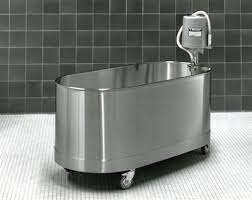
- The low boy tank may be used to allow an adult to sit in the tank and may go in the limit from 75 to 105 gallons.
High boy tank
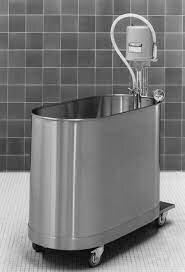
- Now and then referred to as a hip or leg tank, may allow immersion of bilateral lower extremities. the limit may go from 60 to 105 gallons.
Hubbard tank
- A tank of reasonable size and shape for utilization in dynamic or passive submerged exercises.
- It is additionally used for the debridement of burns and different injuries.
- The Hubbard tank has a more prominent potential for exercise at the time of treatment because of its size and may fit with a full body treatment limit and may run any place ranging from 200 gallons to an excess of 400 gallons.
Figure 8 Example
- The example may allow simple access to the patient.
- Note that the huge tanks additionally have more than one turbine for agitation.
Butterfly shape
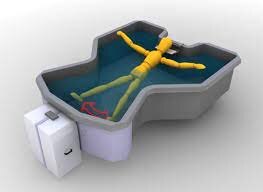
- The extremity tank is generally used for the upper or lower extremities and has a limit of 10 to 45 gallons of water.
Therapeutic Effects of whirlpool bath
The whirlpool bath combines the values of conductive intensity and gentle massage. The hydro-massage effect reaches the following Therapeutic Effects:
- A soothing activity.
- A help of torture by improvements which act through the agony walk instrument.
- An unwinding of muscle fits.
Goals of Whirlpool Therapy
The typical goals of whirlpool use in the physical therapy clinic involve:
- Reduce swelling
- Control inflammation
- Provide wound healing
- Increase range of motion
- Reduce pain
- reduce muscle spasms
Common injuries and conditions that can be treated with whirlpool therapy involve
- Ankle fracture
- Plantar fasciitis
- Lisfranc dislocation
- Colles’ and Smith’s fractures
- Ankle sprain
- Tennis elbow
- Achilles tendon rupture and tendinitis etc.
Uses of whirlpool bath
- Burns if no agitation is used.
- Open wounds for debridement purposes.
- post-operative orthopedic conditions where the water will add a buoyancy element to reduce the weight of the extremity for movement.
- As a resistance force for exercise.
Technique of Application
- The whirlpool tank is filled with water.
- The water temperature is checked by using a hand and thermometer.
- Fix the patient’s position in accordance with the treated body part and consider both comfort and security.
- Explain the procedure and reassure the patient.
- Place the body part in the water.
- Encourage the patient to move while keeping the body part underwater at the time of treatment in case of joint involvement.
- After completion of treatment, dry the body part and muffle it keeping it warm.
Water Temperature
- The advised temperature varies between 36°C and 41°C, starting normally until reaching the maximum tolerance of the patient.
Treatment Duration of whirlpool bath
- Between 15 to 45 minutes.
Actions
- Giving vasodilatation.
- Increase local arterial and lymphatic circulation.
- Softening of scar tissue.
- Breaking down past adhesions after fractures or sprains.
- Cleaning and stimulation of wounds.
- Mechanically removing dirt, dead tissue, and puss.
- Causing regression of the inflammatory process.
- Demenution of edema and effusion.
- The part to be treated is immersed in the water and a jet of the stream is permitted to produce turbulence in the hot water.
Indications of whirlpool bath
- Poor circulation
- Chronic edema
- Separate dead tissue
- Pain relief in amputations ( phantom pain)
- After removal of plaster cast (fractures)
- Stiff joints
- Infected wounds → with added antiseptic agent
- Arthritis with stiff and swollen joints
- Poliomyelitis and paraplegia to improve circulation
- Traumatic and chronic inflammatory conditions
- Weak and painful feet
- As devising for massage, passive stretching, and exercise.
Contraindications of whirlpool bath
- Diabetes mellitus
- Varicose veins
- Advanced arteriosclerosis
- Advanced peripheral vascular diseases
- Feverish patient
- Recent skin grafts
- Circulatory impairment
- Active bleeding
- Open wounds
- Hemorrhage
- Skin allergy
Beware of any adverse conditions that can appear
- As skin pallor
- Shivering
- Dizziness
- Rapid, weak pulse
- Headache
- Increase in edema
- Reduce range of motion (ROM)
- Hyperventilation
- Seasickness
Note
- When the size of the whirlpool bath is inadequate for treatment, the Hubbard Tank is suggested as it allows the whole body to be immersed and all the muscle groups to exercise in a water medium.
- The whirlpool bath may be used in giving ultrasonic treatment to the extremities.
- The water in this situation is utilized as a coupling agent.
FAQ
Whirlpool therapy occurs in a large tub that is filled with either the warm or cold water used for the treatment. The injured body part will be placed in the water, and then a motor will be started to move water around the body part in a jet-like manner.
Turn the Hot Tub into an Exercise Spa. The Arthritis Foundation says that warm water therapy gives patients the most well-tested and enjoyable treatment for knee pain. With water therapy, A person may enjoy both immediate relief from knee pain and long-term protection from future injuries.
Whirlpool therapy, or hydrotherapy, is one of the ancient adjuvant forms of treatment for wounds still in use today. It was originally used in pain management, but after that found use in wound management, exactly in the management of burn patients
The whirlpool jets work on contracted muscles, Slowly breaking them down, while the warm water comforts the person’s aches. A jetted bathtub with targeted jet placement may directly hit problem areas effectively. Hydrotherapy benefits the healing process
too.
Whirlpools are a non-selective form of mechanical debridement.

